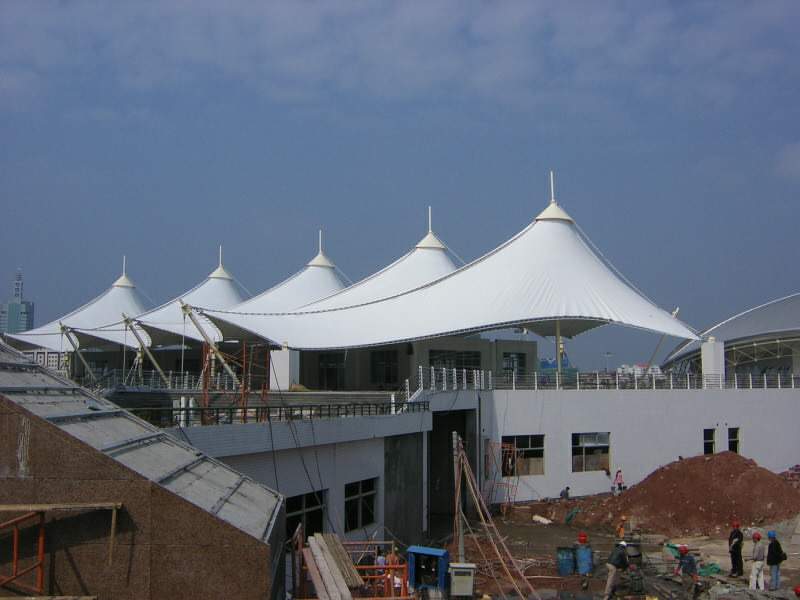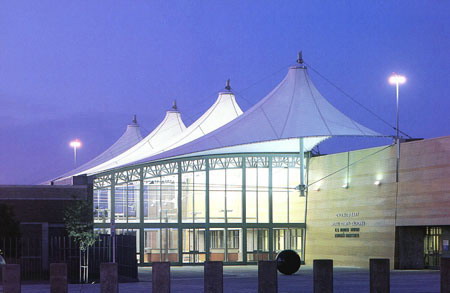The idea behind tension fabric structures has been around for as long as man has created structures for shelter. As the name suggests, tension fabric structures utilize fabric in complete tension, or the act of pulling apart, as a primary building material. The earliest and most frequently used example of this type of structure was tents. Historically tents have differed in building materials and methods of construction, depending on the climate in which they were constructed, ranging from the black tents of the Bedouins, Berbers, Moors, and Kurds to the highly evolved American tipi of the Native Americans.
On the whole however, most buildings prior to the twentieth century were based on compression loading, or the act of pushing together. Some notable examples of this compression architecture are the ancient Egyptian pyramids and the iconic Eiffel Tower of Paris. There were exceptions to this rule, such as the Golden Gate Bridge of San Francisco and other suspension bridges.
In the 1950s, architects and engineers began to take a renewed interest in using tension as the primary method of transferring loads in structures. Two main figures responsible for advancement in this investigation of tensile structures were Frei Otto and Horst Berger of Germany. Otto was a pioneer in tensile architecture who discovered natural forms such as soap bubbles and crystals created shapes that used a minimum amount of materials very efficiently. He then went on to make the connection that these forms could be used as possible shapes of perfect tension and therefore could be utilized in tensile architecture. However, without these shapes being defined mathematically, little further analysis and testing could be done without creating painstaking models out of soap. Berger was instrumental here. He discovered the mathematical relationship describing this soap bubble form. Since this discovery, tension fabric structures have begun to appear on the architectural landscape. Some current well known structures utilizing tension fabric include the largest cable supported roof in the world of the Millennium Dome in London, England, and the Haj Terminal in Jeddah, Saudi Arabia, designed in part by Berger and currently one of the largest tensile structures in the world.
Source: Illumin







